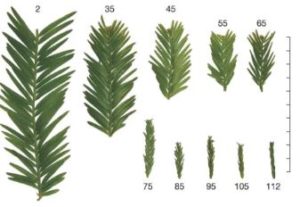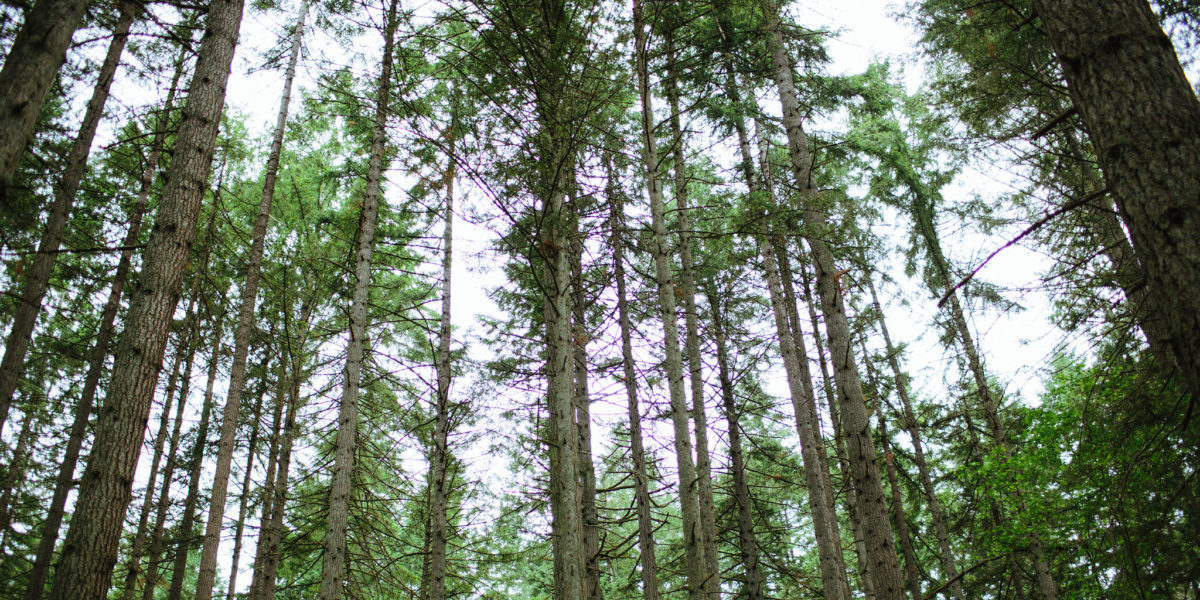Trees have the potential to be the largest organisms on Earth. The world’s tallest tree, dubbed Hyperion, is 380 ft tall and weighs over 1,600,000 lbs. Compared this to the world’s largest animal, a particularly massive blue whale which was 100 ft long and weighed 380,000 lbs, the simply massive size of this tree should be obvious. And unlike a whale, a tree is much less likely collapse and crush itself under its own weight. Trees need to be tall, even if doing so consumes a lot of resources, in order to compete for sunlight. So what lets trees get this big, and what limits their height?

There are two primary rules that govern tree sizes. The first is mechanics, the way the trunk of the tree is built and how it responds to weight. The wood of the biggest trees has a very high strength to weight ratio, which enables a tree to carry its own massive weight without collapsing. The layout and structure of this wood is analyzed at length in the journal by M. Ramage, but in summary, tall trees have internal cells called tracheids. These tiny circular tubes are 2-4 mm long and around 30 μm wide and provide support to the tree and allow water to flow throughout it, without adding as much weight.

The high strength to weight ratio of wood allows trees to support themselves at incredible heights. Using B. Blonder’s research about the scaling of trees, it can be shown that trees are so strong and yet comparatively light weight that a tree would not actually collapse under its own weight until it was almost 15 Empire State Buildings tall. Obviously no tree is this tall, meaning some other factors must limit their height, but the incredible strength of wood should now be clear!

The second primary rule that governs tree size is hydraulics, and it restricts the height a tree can reach. Hydraulics defines a tree’s ability to move water from its roots to its upper leaves in order to perform photosynthesis. The taller a tree gets, the more difficult this process becomes until the tree becomes incapable of growing any taller. G. Koch’s article, The Limits to Tree Height, explores how this hydraulic system works and how it restricts the heights a tree can reach. Xylem, tiny internal pipes that run from the roots to the tops of the tree, and carry water in a long continuous column this whole length. The longer this column becomes, the more difficult it is to maintain and the greater suction pressure that occurs at the highest leaves. Koch studied how properties in leaves changed the higher up they could be found, determining that the efficiency of Photosynthesis decreased, the pressure at the end of the xylem increased, and the size of leaves decreased. At great heights, the status of leaves seemed remarkably similar to those of a tree undergoing a severe drought.
Koch determined that these changes with height would eventually hit a maximum limit which they could not exceed, a limit that was determined to occur between 122-130 meters. So while the efficient properties of wood allow trees to reach incredible heights, their restricted ability to move water limits just how tall they can grow.
Featured image from “Washington Woods Tall Trees” by *Jonathan Connolly which is licensed under CC BY 2.0.
